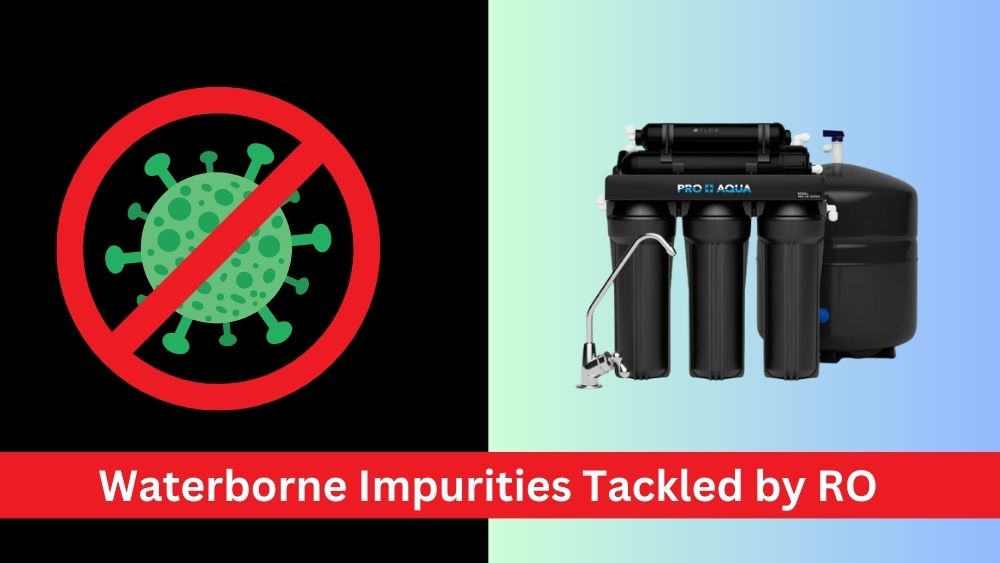How reverse osmosis removes contaminants?
A reverse osmosis system (RO) eliminates contamination from water by 95% to 99%. However, the RO filtration process does not guarantee that every single contaminant will be removed from drinking water.
70% of households rely on tap water for their drinking water needs, and 27% rely on groundwater. As a result, there is a possibility that these water resources may contain a variety of disease-causing microbiological contaminants, such as viruses, bacteria, fungi, and other harmful impurities.
About 72-80 per cent of our body is water. According to the World Health Organization, water is the direct or indirect cause of 80% of the world’s diseases. The role of safe water is important in the elimination of various wastes produced in the body and temperature control. For this reason, you should drink at least two to three liters of safe water daily.
Multiple stages of filtration are used in reverse osmosis systems to purify water. Several filters pass the water, including a sediment filter, a carbon filter, and a polishing filter.
The higher concentration solution goes to the lower concentration in the RO filtration system. As a first step, osmotic pressure is applied to normal water to direct it towards the reverse osmosis membrane. The mother organ of Reverse Osmosis is RO Membrane. The pore size of a RO membrane is 0.0001 microns.
A booster pump presses the water, and the surface tension forces the water through the reverse osmosis membrane. Therefore, only dissolved oxygen and mineral-rich water are released. In addition, the membrane’s 0.0001-micron semi-permeable filter prevents all the elements of water greater than 0.0001 microns. Consequently, RO Systems remove bacteria, viruses, and chemical contaminants.
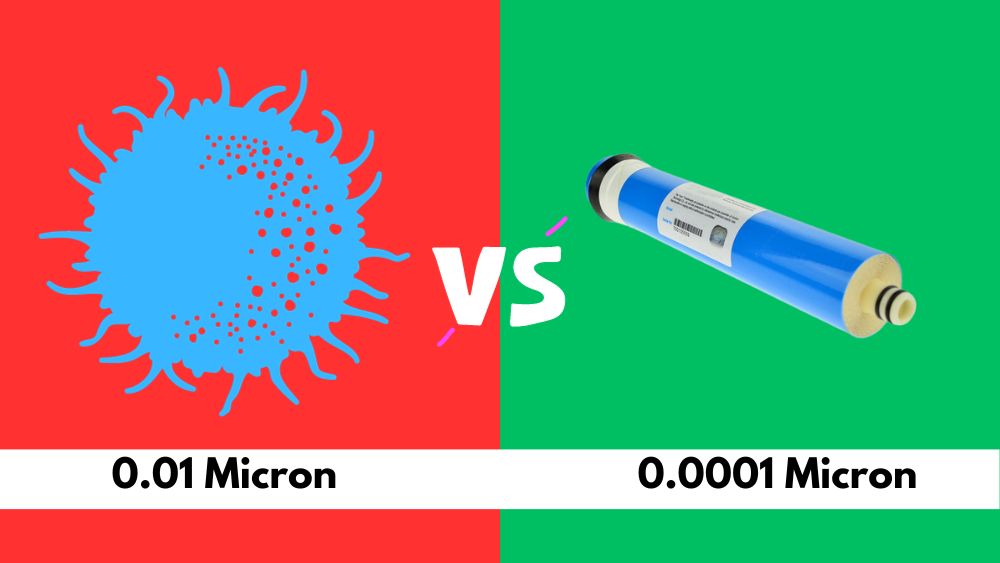
Does reverse osmosis remove bacteria?
The answer is yes. The diameter of the smallest bacteria (microorganism) in the world is 0.01 micron, which is 100 times larger than the diameter of each hole in the RO membrane.
As a result, bacteria can not pass the RO membrane. So the water remains utterly bacteria-free in the post RO filtration. The point to be noted is that the Reverse Osmosis system does not kill bacteria. Instead, it filters out the bacteria and drains the contaminated water down the drainage line.
We know that there are several stages of the RO Filtration system. For example, after the RO membrane, there are post carbon filters (polishing filters), mineral filters, alkaline filters, etc. But the question is, what will be the solution if the bacteria grow in these filters?
Therefore, UV light is the only solution to destroy these bacteria. Additionally, UV light must be the last step in the RO system. So as to ensure no bacteria remain in the water after passing through it.
However, UV light is effective only in the case of transparent water. A variety of UV filters are available on the market with varying capacities. Therefore, checking if the RO Water Purifier has an 11-watt UV filter before purchasing is essential.
Which bacteria does reverse osmosis remove?
It is common for bacteria to be single-celled organisms and are naturally present in water. Like everything else on the planet, the water on Earth is full of bacteria. Some bacteria are beneficial, and some are not. For example, Escherichia coli (E.coli) bacteria grow in humans’ excretion. It can get into the water and cause health problems and sickness.
Harmful bacteria in your water are Escherichia Coli (E. Coli), Campylobacter Jejuni, Hepatitis A, Giardia Lamblia, Salmonella, Legionella Pneumophila, Cryptosporidium, etc.
The smallest bacteria (microorganism) in the world has a diameter of 0.01 microns. It is 100 times larger than each RO membrane hole. As a result, no bacteria can not pass the RO membrane.
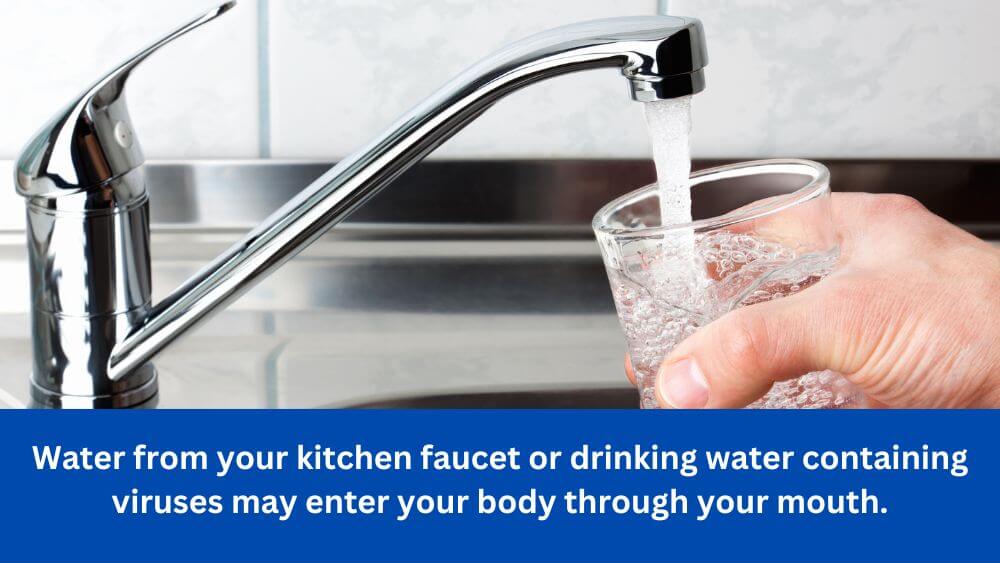
Does reverse osmosis remove viruses?
Reverse Osmosis Systems are highly effective at removing viruses. The reverse osmosis process can remove various viruses, including, Enteric, Norovirus, Rotavirus, Adenovirus, etc.
Water from your kitchen faucet or drinking water containing viruses may enter your body through your mouth. In addition to being able to survive in water, viruses that can survive in water are a significant problem. It is effortless for them to spread from one person to another and from one place to another.
The Reverse Osmosis (RO) membrane in an RO system has a minimum pore size of about 0.001 micron. On the other hand, the virus size is between 0.02-0.25 micron, much smaller than the diameter of viruses. Thus, an RO system is undoubtedly effective at removing viruses.
Does reverse osmosis remove chlorine?
Yes! Reverse Osmosis filtration systems remove chlorine by filtering it through a Chlorine Taste and Odour (CTO)filter. The most common 5 stages of reverse osmosis are-
- A Sediment filter
- A Granular Activated Carbon (GAC) filter
- A Chlorine Taste and Odour (CTO)filter
- A Reverse Osmosis (RO) membrane
- A Post Carbon Filter or Polishing filter
At the Granular Activated Carbon & Chlorine Taste and Odour stage, most of the chlorine has been removed. Then the job of RO Membrane starts working. The Size of the chlorine atom is 0.000175 micrometers. But the pore size of the RO membrane is 0.0001 micrometers. So that means the chlorine atom is greater than the RO membrane pore size. As a result, reverse Osmosis water filter reduces chlorine and other water pollutants by up to 98 percent.
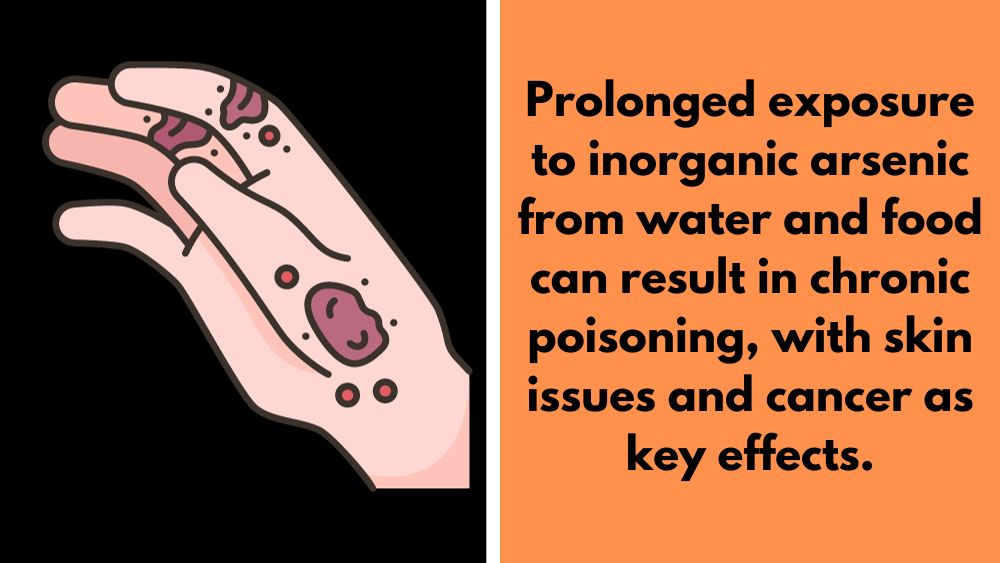
Does reverse osmosis remove arsenic?
Arsenic (As) is a white to grey and natural component of the earth. Nevertheless, arsenic is one of the most toxic metals found in rocks, soil, plants, air, and even water. Agricultural and industrial sources may also discharge it into the environment.
Long-term exposure to inorganic arsenic, mainly through drinking water and food, can lead to chronic poisoning. Skin lesions and skin cancer are the most characteristic effects.
Arsenic compounds come in two major divisions. They include:
Inorganic arsenic
The inorganic form of arsenic is formed whenever arsenic is combined with metals and elements other than carbon. Therefore, the most dangerous form of arsenic is inorganic. In addition, inorganic arsenic, bonded to oxygen atoms, can also be found in groundwater, rice, cereal grains, and other foods.
Organic arsenic
The term organic arsenic refers to arsenic, which is mixed with carbon and other elements. Compared to inorganic arsenic compounds, these compounds are much less harmful. Some foods, such as fish and marine life, can contain these compounds because they consume algae containing arsenic compounds.
A Reverse Osmosis System is the most cost-effective method for removing arsenic from a household water supply. Reverse Osmosis is the only filtration method that removes the contamination from the micrometer to the nanometer.
RO membranes have microscopic pores that are specially sized to allow only water molecules to pass through. Also, it prevents the molecules of chlorine, fluorine, bromine, lead, iron, chromium, and surely arsenic.
An accurate RO Membrane’s Pore Size is 0.0001 microns smaller than arsenic’s atomic size of 0.000185 microns. So reverse osmosis filtration can free water from arsenic and other heavy substances.
According to research, RO can remove arsenic by 80% to 99%.
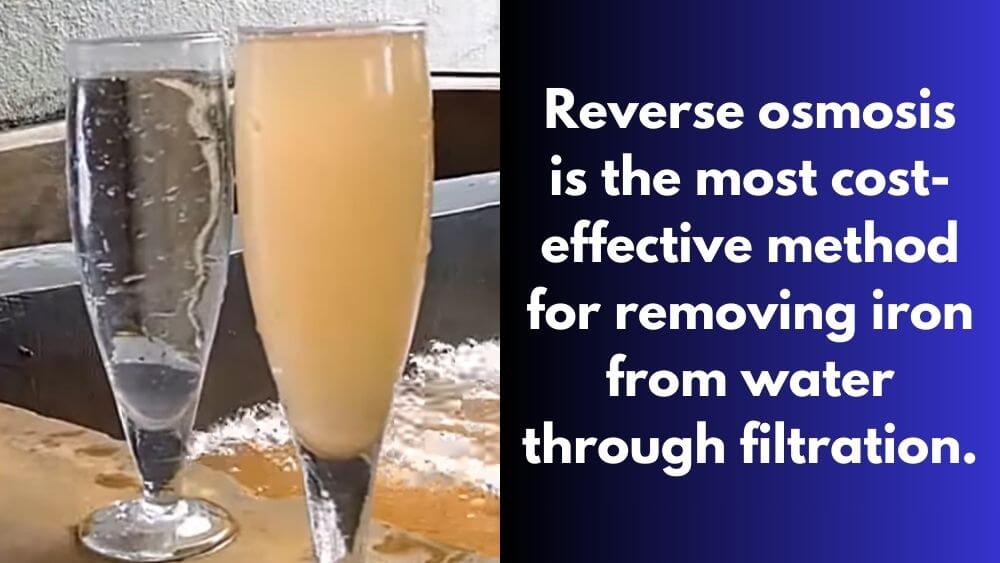
Does reverse osmosis remove iron?
Problems that can occur as a result of using iron-rich water include:
- Black spots on the skin
- Itching
- Yellow or red teeth
- Hair loss
Besides, iron causes red spots in the basin and water container. Washing clothes with iron water can also cause red spots on clothes.
The two most common types of iron are found in the water. One is Ferrous, and another one is Ferric.
- Ferrous Iron – Ferrous Iron is entirely transparent, clear, and colorless. These Irons are dissolved (Soluble) in water, which is why this type of iron can not be seen with an open eye.
- Ferric Iron – Ferric Iron causes the water to be little brown or yellow. So anybody can realize the presence of iron in the water. This type of iron is not dissolved in water (insoluble).
The reverse osmosis systems filtration method is the most economical way to remove iron from water. Especially reverse Osmosis is the best option to remove Ferric iron from water. The reverse osmosis filtration method can remove up to 99% Ferric iron.
On the other hand, Reverse Osmosis is less effective in removing Ferrous iron from water. Adding an extra filter called iron reducer will help you to get the best possible outcome against Ferrous Iron. Ensuring an additional iron reducer filter will remove 98% of iron from water.
Only an RO system is enough to remove Ferrous Iron but will decrease the lifetime of the RO membrane. Therefore, before installing a RO system in your home, ensure which iron is available in your local area.
Does reverse osmosis remove heavy metals?
The straightforward answer is yes! Because the pore size of the Reverse Osmosis membrane is smaller than the diameter of the heavy metal. The common heavy metals of water are- Lead, Arsenic, Cadmium, Chlorine, Bromine, Fluorine, Iron, etc.
- Lead in water destroys the functioning of the nervous system, respiratory system, reproductive system, and excretory system (kidney) and causes death.
- Arsenic in water can cause skin diseases, heart disease, blood circulation disorders, and lung and gallbladder cancer.
- Cadmium in water can cause kidney disease, osteoporosis, and cardiovascular disease.
- Halogen in water (chlorine, bromine, etc. used in the purification process) causes liver cancer, kidney tumor, bronchitis, pneumonia, etc., and damages the respiratory organs.
- Moreover, if we do not use safe water, we can be affected by typhoid, cholera, diarrhea, dysentery, hepatitis, and salmonella.
Relevantly noted, the shape of a lead atom is 0.000202 micrometer, the shape of a chlorine atom is 0.000175 micrometer, the shape of a cadmium atom is 0.000158 micrometer, the shape of an arsenic atom is 0.000185 micrometer. The pore size of the reverse osmosis (RO) membrane is 0.0001 micrometer. As a result, lead, arsenic, chlorine, cadmium, or any other heavy metals cannot enter the water by crossing this membrane.
Does reverse osmosis remove microplastics?
Surely a good Reverse Osmosis filtration system removes microplastics effectively. The sediment and carbon filter stage will remove most of the microplastics. As a result, the RO membrane begins its filtration process and removes all microplastic.
No microplastic is smaller than the pore size of the RO membrane. In addition, the membrane’s 0.0001-micron semi-permeable filter prevents all the microplastic of water.
Microplastics result from the breakdown of larger plastics in household work and the development of commercial products. Microplastics can enter the water from various sources, like plastic equipment, especially non-food-grade plastic equipment. The best possible result is to get rid of microplastic using Reverse Osmosis water filtration.
Does reverse osmosis remove minerals?
Unfortunately, the straightforward answer is Yes! But before understanding the whole thing, you can not decide that RO filtration is bad for the human body.
Reverse Osmosis (RO) removes more than 90% of Total Dissolved Solid (TDS) from water. Here, the RO system does not consider the TDS good or bad. Instead, it just removes the good and bad impurities neutrally. Minerals greater than the pore size of the RO membrane are filtered out.
Now the question can come, how RO system will compensate for the minerals that have been filtered out? The answer is easy, water is not the main source of minerals for the human body. Food and meat is the main source of minerals for the human body. Therefore, only a small amount of vegetables can compensate for the minerals of RO water. Using a mineral filter with an RO system for more minerals is a great option.
What is not removed by reverse osmosis?
Some impurities are molecularly smaller than the pore size of the RO membrane. These impurities can be harmful or helpful to the human body. That means anything in the water smaller than 0.0001 microns can pass the RO membrane.
The following list is the name of elements that the Reverse Osmosis system can not remove-
- Formaldehyde
- Methanol
- Acetonitrile
- Nitro nitro soly methyl amino
- Calcium and magnesium
- Potassium
- Sodium
- Copper
- Zinc
- Fluoride
- Phosphorous
- Pesticides, Herbicides & Fungicides
- Some dissolved gasses, like ammonia, carbon dioxide, oxygen, hydrogen sulfide, etc.
The removal rates of RO Membrane vary from one brand to another. It’s also hard to treat all organics the same. For different RO membranes, rejection rates will vary depending on the solute molecular weight.
Final Words
The way reverse osmosis removes elements, no such technology can detect healthy or unhealthy molecules from water. So it’s impossible to separate the good stuff from the bad things from water. So lastly, we can conclude that Reverse Osmosis is the most effective method for filtering water compared to other methods.

Hasan Al Sarker is a Reverse Osmosis Specialist. He has worked for many years to ensure safe drinking water for all. His research paper has been published in several journals, including Issue, Medium, and Slideshare. He is recognized as a water doctor among specialists though he did not attend medical college.
Besides working as a researcher of reverse osmosis technology, he is also very fancy with the kitchen and cooking. His guides are reading thousands of people every day. As a head of content, he is responsible for all the published articles at RO System Reviews.

